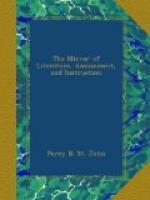“According to Mateo, it was a tradition handed down from the oldest inhabitants, and which he had from his father and grandfather, that the hand and key were magical devices on which the fate of the Alhambra depended. The Moorish King who built it was a great magician, or, as some believed, had sold himself to the devil, and had laid the whole fortress under a magic spell. By this means it had remained standing for several hundred years, in defiance of storms and earthquakes, while almost all other buildings of the Moors had fallen to ruin, and disappeared. This spell, the tradition went on to say, would last until the hand on the outer arch should reach down and grasp the key, when the whole pile would tumble to pieces, and all the treasures buried beneath it by the Moors would be revealed.
“Notwithstanding this ominous prediction, we ventured to pass through the spell-bound gateway, feeling some little assurance against magic art in the protection of the Virgin, a statue of whom we observed above the portal.
“After passing through the barbican, we ascended a narrow lane, winding between walls, and came on an open esplanade within the fortress, called the Plaza de los Algibes, or Place of the Cisterns, from great reservoirs which undermine it, cut in the living rock by the Moors for the supply of the fortress. Here, also, is a well of immense depth, furnishing the purest and coldest of water; another monument of the delicate taste of the Moors, who were indefatigable in their exertions to obtain that element in its crystal purity.
“In front of this esplanade is the splendid pile commenced by Charles V., intended, it is said, to eclipse the residence of the Moslem kings. With all its grandeur and architectural merit, it appeared to us like an arrogant intrusion, and, passing by it, we entered a simple, unostentatious portal, opening into the interior of the Moorish palace.
“The transition was almost magical: it seemed as if we were at once transported into other times and another realm, and were treading the scenes of Arabian story. We found ourselves in a great court, paved with white marble, and decorated at each end with light Moorish peristyles: it is called the Court of the Alberca. In the centre was an immense basin or fish-pond, a hundred and thirty feet in length by thirty in breadth, stocked with gold-fish and bordered by hedges of roses. At the upper end of this court rose the great Tower of Comares.
“From the lower end we passed through a Moorish archway into the renowned Court of Lions. There is no part of the edifice that gives us a more complete idea of its original beauty and magnificence than this, for none has suffered so little from the ravages of time. In the centre stands the fountain famous in song and story. The alabaster basins still shed their diamond drops; and the twelve lions, which support them, cast forth their crystal streams as in the days of Boabdil. The court is laid out in




